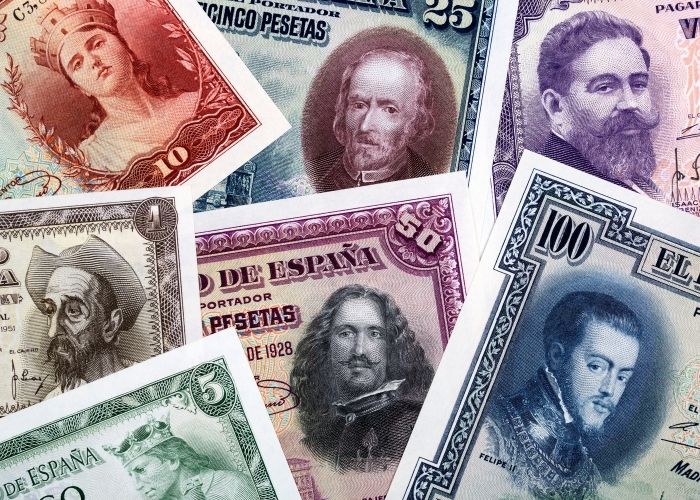MADRID – On June 30, the deadline to exchange peseta coins and banknotes for euros ended. Thousands of people lined up at branches of the Spanish bank to extract value from their historic pesetas at the last minute.
After the deadline for exchange on June 30, the Spaniards would still have a total of €1,577million of the old national currency in-house. This amount is equivalent to 262,390 million pesetas. According to the Spanish bank, this figure shows that Spaniards exchanged 7 million euros worth of old pesetas in the month of June. The average amount of pesetas exchanged by the Spaniards at the last minute is about €170 per person, according to Concha Jiménez, general manager of Cash and Branches.
According to data from the Bank of Spain, Spaniards still have a total of 132,110 million pesetas in banknotes (€794million and 130,280 million pesetas in coins (€783million) somewhere.
In the absence of definitive data, the bank estimates that 45% of the peseta coins in circulation before the introduction of the euro will never be exchanged at the Bank of Spain because people want to keep them as collectibles, as they are in very bad condition, lost or left the country in the pockets of tourists.
First peseta in 1868
The peseta was legal tender in the Spanish state and its colonial territories from its adoption on October 19, 1868, until the adoption of the euro as the official currency in the European Union and Spain on January 1, 1999.
The National Spanish Mint and Stamp Factory (FNMT) last minted pesetas with a 100 pesetas coin on June 19, 2001, while on November 21, 2000, six months earlier, the last peseta note of 10,000 pesetas left the print shop.
After the introduction of the euro, Spaniards were able to make payments in both euros and pesetas for another 3 months – until March 31 that year. An amendment to the Euro Act, in 2012, set a deadline of December 31, 2020, but in November last year, the government extended the deadline again by six months to June 30, 2021, due to mobility restrictions stemming from the pandemic.
Very valuable coins
If you still have pesetas at home, it’s worth checking to see if there are any valuable ones. Some are worth a fortune. Normally, numismatics or collectibles shops are not very interested in pesetas, unless they are limited editions or editions with a quirk. In such a case, your old peseta coin can yield up to €20,000.
Silver pesetas
For example, pesetas of silver are special. Normally they were made of aluminum or bronze. Silver pesetas are usually purchased by coin collectors who purchase them by weight at the prevailing price of silver. That is now between €400-500/kilo.
The most wanted peseta coins
Specialised websites such as Foronum, Todocolección, or Sellosonline collect some of the most sought-after coins. They are also for sale on websites such as eBay. In any case, when in doubt, it is best to consult an expert in numismatics or collecting:
- 1 Peseta 1947. The first coins with the portrait of Francisco Franco on it. They were popularly known as ‘blondes’. Some, very rare and well preserved, are sold for up to €1,400.
- 5 Pesetas (also with the portrait of Francisco Franco) 1957. The price varies from three cents to €800, depending on the condition of the coin. It was made of copper-nickel and was known as ‘hard’.
- 1 Peseta from 1944. The price varies between €3.19 and €354.76, depending on the condition they are in. This peseta was made of aluminum bronze.
- 25 pesetas (Castilla-La Mancha) 1996. The nickel-brass ‘five duros’ with a hole in the centre cost between 50 cents and €50.
- 1 Peseta 1987. This was minted on the occasion of the III National Exhibition of Numismatics. The price is around €45.
- 100 Pesetas 1983. The famous ’20 duros’. Made in 1983 they are now worth about €55.
- 50 Pesetas 1984. The huge ‘ten duros’ coin reaches a value of €65-70.
- 100 Pesetas 1966. Made of silver and can fetch €145.
- 5 Pesetas 1975 with the reverse of the World Cup ’82. They were made on the occasion of the 1982 World Cup in Spain and are very much appreciated. Some coins accidentally have the year on the back.
Finally, the least lucrative option is to take your old coins to the scrap dealer. Here you will receive around €3/ kilo of pesetas. It takes about 334 coins of 5 pesetas to reach the kilo.


